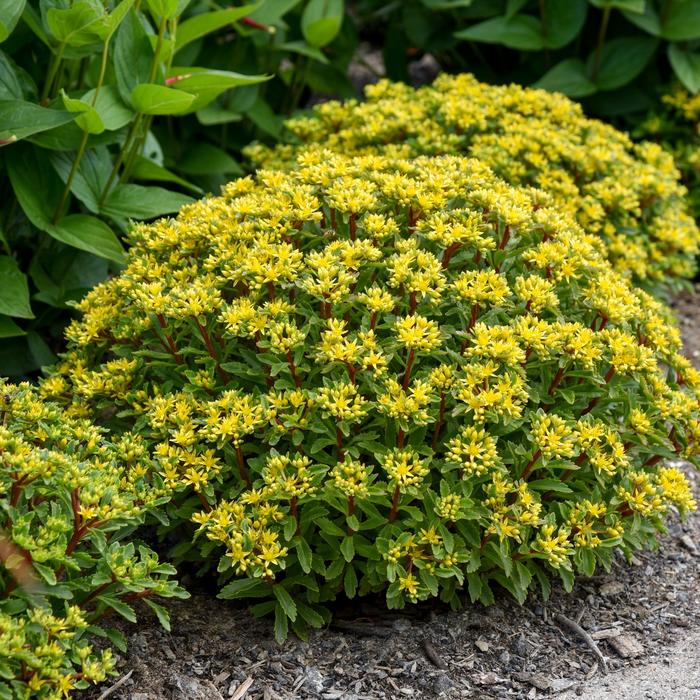« Previous Plant | Next Plant »
Sedum (Stonecrop)
Rock 'N Round™ 'Bright Idea'
Red stems hold deep green, serrated leaves and clusters of bright yellow, star-shaped flowers. This tough perennial is perfect for hot, dry areas in the garden or as a filler in mixed containers. This plant falls into a category of hardy, dome shaped Sedum hybrids. These plants typically bloom in early fall on round mushroom cap-type habits. Especially vivid when planted en masse. Through the year they showcase succulent foliage and are well adapted to low water and rock gardens. If left standing, they provide winter interest and food for birds.
- » Beautiful green leaves, red stems
- » Yellow flowers
- » Ideal for the sunny garden
Sedum is one of the most popular perennials grown in American gardens because it is very easy to grow and hardy in most areas of the country. Because of its thick, succulent leaves which can store water, sedum is drought tolerant. It should be sited in average to poor soil that is well-drained. Plants grown in rich soil tend to be lanky and open. Most varieties should be grown in full sun to light shade. The lower growing types, however, will survive in partial shade. This plant is not usually bothered by pests or diseases. The seed heads of the taller varieties provide excellent winter interest and food for birds. Remove them in spring when the new growth begins to show.
- Height
- 10 - 12 in
- Spread
- 16 - 20 in
- Zone
- 3-9
- Color
- Yellow
- Categories
- Perennial
- Breeder
- Proven Winners
- Tags
- Border or Bed; Great Foliage; Full Sun; Dry Soil;
Check back soon for additional information on Rock 'N Round™ 'Bright Idea'.
Sedum is one of the most popular perennials grown in American gardens because it is very easy to grow and hardy in most areas of the country. Because of its thick, succulent leaves which can store water, sedum is drought tolerant. It should be sited in average to poor soil that is well-drained. Plants grown in rich soil tend to be lanky and open. Most varieties should be grown in full sun to light shade. The lower growing types, however, will survive in partial shade. This plant is not usually bothered by pests or diseases. The seed heads of the taller varieties provide excellent winter interest and food for birds. Remove them in spring when the new growth begins to show.
